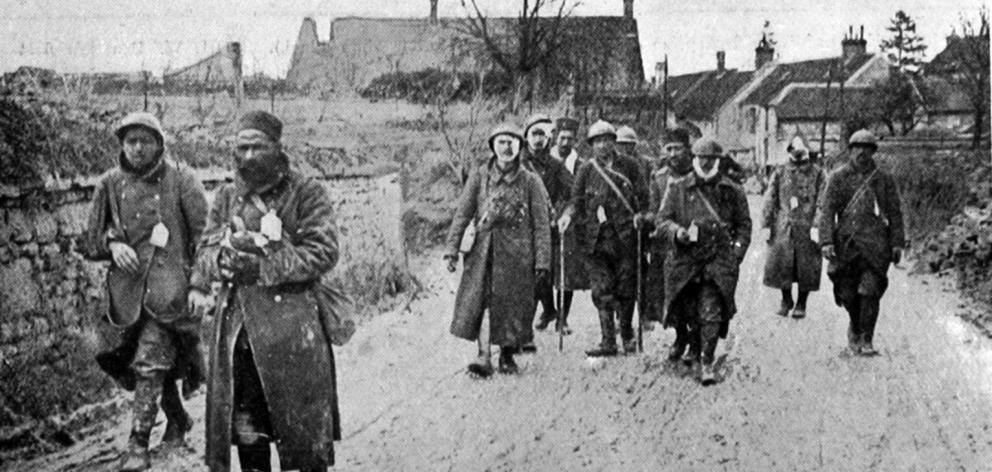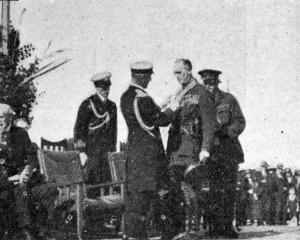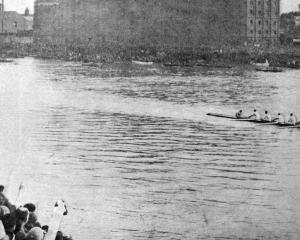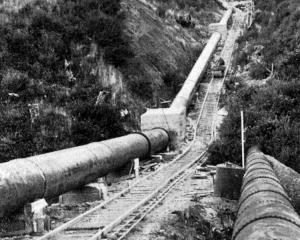
Fortunately no-one was actually berthed over the spot. The explosion wrecked the social hall and the staircase leading to it. The shaft tunnel was shattered and the shaft broken, letting the water into the engine-room and flooding the dynamo, with the result that all the lights were extinguished. The Wimmera remained on an even keel for 10 minutes, and then heeled to port until her funnel was lying on the water.
She partly righted herself before sinking by the stern 20 minutes after the explosion. It is thought that the safety of the stewardesses is due to the fact that they were attending to passengers at the time, otherwise the explosion occurring near their room would have prevented them from going forward. The stewards, berthed further aft, were forced to climb out of the store room hatch to the deck.
Sunk by a mine
The arrival at Auckland of a considerable number of the survivors from the Wimmera has admitted of the publication of connected reports of the disaster which involved the loss of the steamer.
These do not, however, add to our knowledge of the circumstances under which the wreck occurred, because, as a matter of fact, there can be no doubt whatever that the Wimmera was sunk through having come into contact with a submarine mine laid by the enemy. The presumption is that the minefield which was known to exist off the coast between North Cape and Cape Maria van Diemen was sown by the Wolf when that raider was in New Zealand waters.
The Church and unionism
Preaching in St. Paul’s Cathedral yesterday morning, the primate (Bishop Nevill) made a significant pronouncement regarding the general question of labour unionism, and one that is of special interest in view of the widely-held belief that the Church is out of sympathy with organised labour. The subject of his address was ‘‘Sign of the Times’’ and dealing with what he described as ‘‘the great socialistic bodies that have been formed in every country of the world’’, he stated that these were an evidence of the fact that the masses were beginning to realise their power and were intending to use that power in the future. He recognised that these great organisations were going to wield a vast influence in the years to come, and he also recognised that they possessed many admirable features among others that called for a measure of revision and modification.
Parcels for POWs
It is apparently not generally known that amongst its many activities the Otago Women’s Patriotic Association has for a long time included the work of sending parcels to New Zealand prisoners of war. In the early days of the war parcels were sent direct to Turkey, but later on the work was taken over by the High commissioner in London. A letter was received in February from Sir Thomas Mackenzie, through the Department of Internal Affairs, inviting patriotic societies and the public generally to contribute parcels of tinned meat and condensed milk to be send to his London Committee for transporting to both Germany and Turkey. — ODT, 1.7.1918
• COPIES OF PICTURE AVAILABLE FROM ODT FRONT OFFICE, LOWER STUART ST, OR WWW.OTAGOIMAGES.CO.NZ












